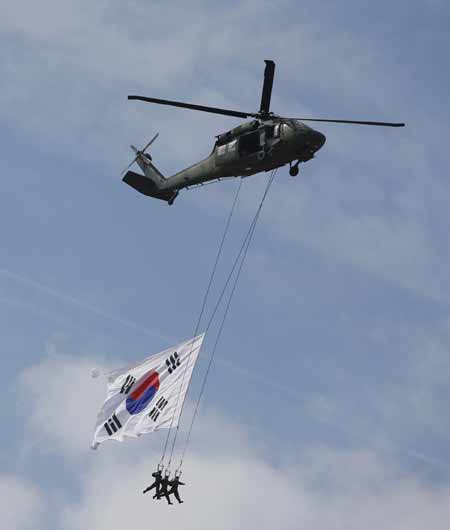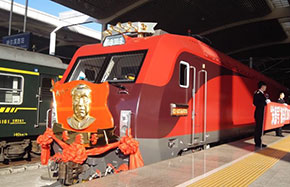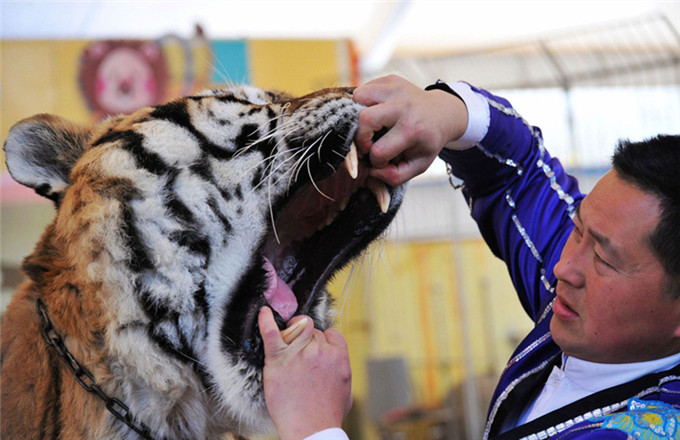Seoul shows off new missiles in parade
|
Members of the Special Warfare Command hang suspended from an army helicopter during celebrations to mark the 65th anniversary of Korea Armed Forces Day, at a military airport in Seongnam, south of Seoul, on Tuesday. Kim Hong-ji / Reuters |
The Republic of Korea showed off on Tuesday new missiles designed to target Pyongyang's artillery and long-range missiles and vowed to boost deterrence against its neighbor.
The ballistic Hyeonmu-2, with a range of 300 km (190 miles), and the Hyeonmu-3, a cruise missile with a range of more than 1,000 km (620 miles) were put on public display for the first time in a rare ROK military parade. Tuesday's parade was the biggest in 10 years.
Both of the indigenously developed missiles have been deployed. They were unveiled in February after the Democratic People's Republic of Korea conducted its third nuclear test in defiance of international warnings, two months after it successfully launched a long-range rocket and put an object into space.
"We must build a strong anti-North deterrence until the day the North drops its nuclear arms and makes the right choice for its people and for peace on the Korean Peninsula," ROK President Park Geun-hye said at the parade marking the founding of the ROK's armed forces 65 years ago.
Visiting US Defense Secretary Chuck Hagel watched the parade from a podium at a military airfield south of the capital, Seoul.
Hagel, on a four-day visit to the staunch US ally, visited the heavily fortified Korean border on Monday and said there was no plan to cut the number of US troops stationed in the ROK from 28,500.
The DPRK's rocket launch in December was widely seen as a test of long-range missile technology. Pyongyang said it was putting up a satellite for peaceful purposes.
The launch and the February nuclear test led to tougher UN sanctions aimed at arms development and trade. The sanctions angered the DPRK and it responded with threats of a nuclear strike on South Korea and the United States.
Seoul reached a deal last year with the United States to extend the range of its missiles to better counter the threat, securing the right to develop ballistic missiles with a range of up to 800 km (500 miles).
The two countries remain technically at war under a truce that brought a halt to the 1950-53 Korean War.
Reuters



















